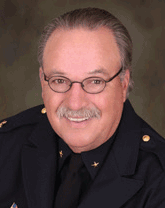
Fewer than two months ago, tragedy struck Sandy Hook Elementary School in Newtown, Connecticut. I feel compelled to discuss it in this column.
Like you, I was stunned and devastated when I saw the sad news that Friday morning in December. At the beginning, details were sparse, but, as the day grew longer, the news became more horrible by the hour. As a police chief—but more importantly as a father and a grandfather—I was and am horrified that 20 precious, young children were murdered along with the 6 adults who died trying to save them. I also am deeply troubled when I think about the many law enforcement officers who responded to the scene. All of us in law enforcement have the day on the job that we will never forget, and December 14, 2012, will be that day for those officers.
December 14, 2012, must also be a day that we—the collective law enforcement community—never forget. Since that day, my shock and horror has turned from anger into a strong motivation to act. As police leaders, it is our calling—not just our job—to protect the citizens in our communities, and especially those who cannot defend themselves. Now more than ever, we cannot let anything stand in our way of fulfilling that mission.
If we are to prevent these tragedies from happening again, there are several things we must address. I strongly believe that our mental health system needs to be comprehensively reviewed and that we need to, in the United States and abroad, be aware of the mental health needs of our communities. One resource that I want to make sure you are aware of is a 2009 IACP summit report titled Building Safer Communities: Improving Police Response to Persons with Mental Illness. The report and its recommendations, available on the IACP website, are intended to promote dialogue among law enforcement, community providers, and partners. However, while I do believe that mental health awareness is a major component of fighting these types of violent acts, I do not believe it is the only component.
We must address gun violence.
Tragedies such as those in Newtown; Aurora, Colorado; Columbine, Colorado; and Virginia Tech in Blacksburg, Virginia, grab our attention, and rightfully so. But the reality is that most law enforcement executives never have to deal with a mass shooting. The hard truth is that more than 31,000 firearms-related deaths occur in the United States each year. The staggering amount of gun violence is why the IACP has been a leading voice in efforts to reduce gun violence. Our membership was and remains a leading proponent of
- the ban on military-style assault weapons;
- the ban on high-capacity magazines;
- the need for universal background checks;
- ensuring the Bureau of Alcohol, Tobacco, Firearms, and Explosives has a permanent director; and
- other commonsense measures that have and will, if adopted, reduce the level of gun violence in the United States.
The IACP also has been a leader in resources for state, local, and tribal law enforcement to help combat illegal firearms. Two relevant documents, Reducing Gun Violence in Our Communities: A Leadership Guide for Law Enforcement on Effective Strategies and Programs and Taking A Stand: Reducing Gun Violence in Our Communities, are available on the IACP website.
Additionally, at the beginning of this year, the IACP prepared a firearms position paper, which identifies and provides solutions to various firearms-related issues that need to be addressed. The paper, available at http://www.theiacp.org/firearms, has been sent to the White House and circulated among members of Congress. As a public safety leader, you will certainly be called on to address concerns of gun violence, and I hope you will find this and other IACP resources helpful. We must reassure our communities that our schools, our workplaces, and our local businesses are safe and that our departments are well positioned to protect our citizens.
I can assure you that the IACP is committed to working with the Obama administration, members of Congress, the National Law Enforcement Partnership to Prevent Gun Violence, and other national leaders to stem the unacceptable level of gun violence in the United States. In fact, the IACP already has met with Vice President Biden to pledge our support to the president and vice president’s initiatives to curb gun violence.
I hope you—the IACP membership—also will commit to addressing the unacceptable level of firearms violence that occurs daily. To honor our oath of protecting the public, we must all work together toward a solution. ♦
Please cite as:
Craig T. Steckler, “Stemming the Unacceptable Level of Gun Violence,” President’s Message, The Police Chief 80 (February 2013): 6.


